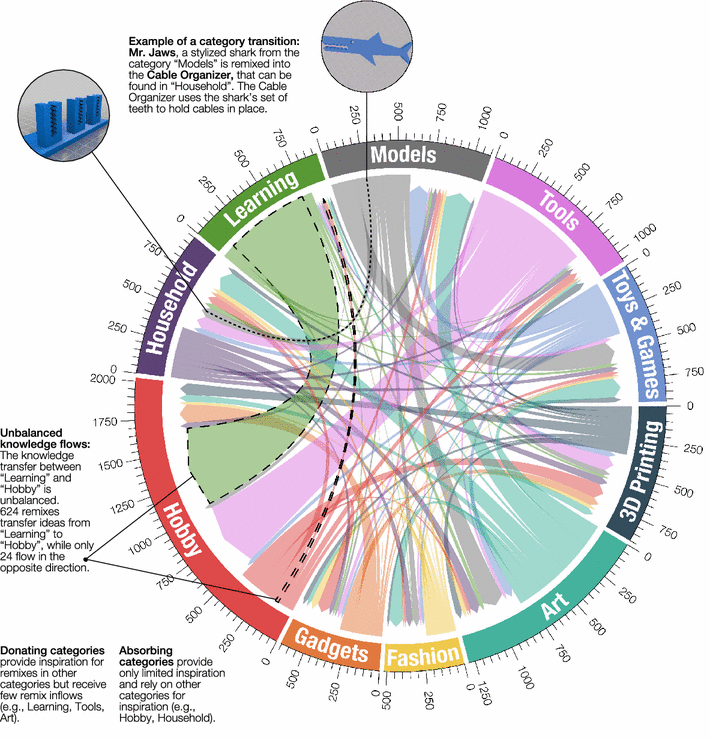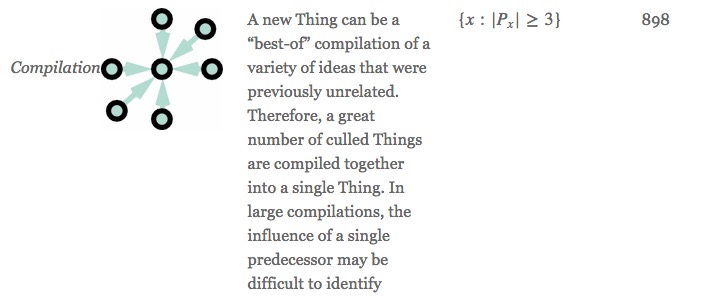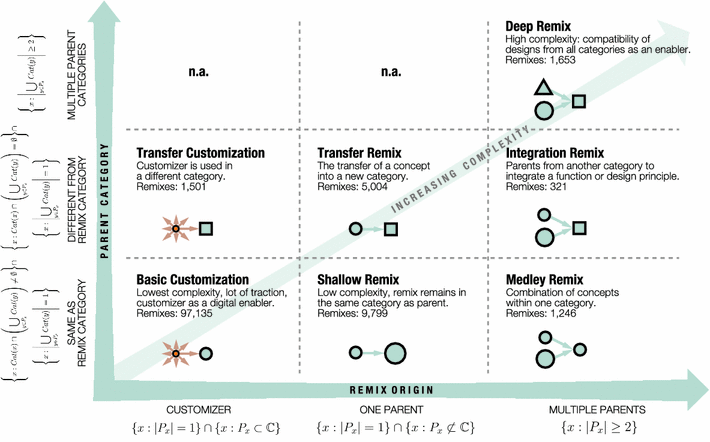
Thingiverse was perhaps the first repository of 3D models dedicated to 3D printing and making. Now we know a lot more about it.
How do we know more? A recent scientific paper has done a detailed analysis of activity on the well-known 3D model repository and come up with some interesting conclusions.
Researchers from Germany and Netherlands developed the paper that primarily focused on the phenomenon known as “remixing”. This was a key feature of Thingiverse right from the start. The idea is that due to the open source nature of the contributions, the intent was to allow – and encourage – designers to improve, combine and adapt existing 3D models.
And indeed we often see this happening; when browsing 3D models on Thingiverse, you quite often will see that an item is a derivative of a previous submission. Frequently you’ll see minor improvements, such as tweaking the shape to provide better function in particular situations.
But up until now no one has performed any formal analysis to see how often this practice occurs, and in what ways it occurs. Contributor Marco Wirth explains:
The article explores four aspects of remixing. First, it discusses the role of remixing. The researchers show that remixing is the basis for half of the designs available on Thingiverse and therefore a crucial component of the platform’s success. Furthermore, the four authors unravel that remixes follow specific patterns and show that all the remixing-activity on Thingiverse can be explained by eight basic patterns. They also show, how the platform has grown since the introduction of a simple remix feature right in the browser window (so called customizer). Additionally, the four explain how remixing as a creative tool is adopted by different user groups. The article provides an insightful view behind the scenes of Thingiverse and shows how the open online community benefits from the possibility that users can build on each other’s ideas.
Fortunately for the researchers, Thingiverse does provide information about the heritage of most 3D models. While some are isolated productions, others are derivatives of one or more previous designs. Should the genealogy of a particular design involve many previous models, you could say there is a form of evolution taking place for these designs.
The researchers identified no less than eight different styles of remixes from two classes of activity:
- (1) convergent remixes characterized by remix relationships with several parents and
- (2) divergent remixes characterized by remix relationships with several children.

Researchers found that the older items have a higher likelihood of being remixed, which makes sense, but also found that non-customized items (those not generated through parameter input) were also more likely to be remixed.

One interesting effect identified was that some items change category when remixed. A household category item might become a toy, for example. This chart illustrates some of the category changing traffic:
The paper proposes several conclusions:
- Remixes pose a second major source of innovation in open online communities besides the emergence of isolated designs.
- Remixes occur in the form of several different, clearly distinguishable paths, including convergent and divergent patterns.
- The co-existence of different design categories allows for cross-category remixes, which are asymmetric, with categories tending to either donate or absorb ideas.
- The effectiveness of remixing on online platforms and their attractiveness to different user groups is influenced by a variety of platform features for browsing and processing its contents.
- To foster innovation in online communities, platforms need to address the needs and interests of different user groups, each characterized by distinct preferences regarding platform features.
There’s plenty more in the extensive analysis, available et the link below.
Via Springer

